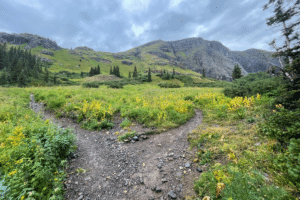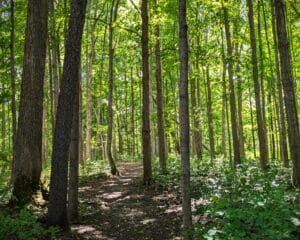Guest Post by Vada
The Creation
I love the opening of this lesson, and would probably read it verbatim. Say that we’re talking about God’s plan for us, and ask the follow-up question about why we needed to come to the earth. You’ll probably get the standard answers of needing to receive bodies and needing to progress and learn so we could be like our Heavenly Parents. Then go on to read the paragraph that follows, as well as its follow-up question.
God’s Plan for Us
• Why did we need to come to the earth?
When we lived as spirit children with our heavenly parents, our Heavenly Father told us about His plan for us to become more like Him. We shouted for joy when we heard His plan (see Job 38:7). We were eager for new experiences. In order for these things to happen, we needed to leave our Father’s presence and receive mortal bodies. We needed another place to live where we could prepare to become like Him. Our new home was called earth.
• Why do you think we shouted for joy when we learned of the plan of salvation?
We were eager to come to the earth. We wanted a chance to grow and progress, and we wanted a chance to prove ourselves. Just as teenagers preparing to go to college, we were ready to leave our parents’ house and set off on our own. We wanted to show that we were able and capable. Ask class members to share their own experiences and stories of when they left home or when their children left home. This gives us an interesting insight into our Heavenly Parents’ perspective on all of this. They obviously want us to live up to our potential and grow to be a wonderful contributing adult capable of taking care of ourselves. On the other hand, it’s hard to watch a child strike out on their own. You’re nervous you haven’t prepared them well enough, or that others will influence them to do things they shouldn’t and you won’t be around to curb the influence. Our Heavenly Parents must have been proud of us for choosing to come to the Earth and to grow and be like them, but they must also have been nervous about the choices we would make when given the opportunity.
I don’t have much to share about the next section, but I’ll leave it in here for those who want to go over it. I have always liked the idea that there are more worlds out there just like ours, with people on them doing the same kinds of things we’re doing.
Jesus Created the Earth
Jesus Christ created this world and everything in it. He also created many other worlds. He did so through the power of the priesthood, under the direction of our Heavenly Father. God the Father said, “Worlds without number have I created; … and by the Son I created them, which is mine Only Begotten” (Moses 1:33). We have other testimonies of this truth. Joseph Smith and Sidney Rigdon saw Jesus Christ in a vision. They testified “that by him, and through him, and of him, the worlds are and were created, and the inhabitants thereof are begotten sons and daughters unto God” (D&C 76:24).
This section gets to the core of the lesson with the first question.
Carrying Out the Creation
• What are the purposes of the Creation?
Obviously you’ll have already talked about how we were created to get bodies, to prove ourselves worthy to return to live with our Heavenly Parents. I would ask the question anyway. After listening to what your class has to say, I would point out that we humans were not the only things created. Then I would read the next two paragraphs.
The earth and everything on it were created spiritually before they were created physically (see Moses 3:5). In planning to create the physical earth, Christ said to those who were with Him, “We will go down, for there is space there, … and we will make an earth whereon these [the spirit children of our Father in Heaven] may dwell” (Abraham 3:24).
Under the direction of the Father, Christ formed and organized the earth. He divided light from darkness to make day and night. He formed the sun, moon, and stars. He divided the waters from the dry land to make seas, rivers, and lakes. He made the earth beautiful and productive. He made grass, trees, flowers, and other plants of all kinds. These plants contained seeds from which new plants could grow. Then He created the animals—fish, cattle, insects, and birds of all kinds. These animals had the ability to reproduce their own kind.
I would pause here and ask the class about the purposes of creating the earth and everything else (besides humans) on it. After listening to their answers, I would use the opportunity to transition to the last section in the manual. You could first read the last paragraph of this section about how humans were the crowning creation, but then move on to point out that everything else was created because our Heavenly Parents wanted to show their love for us.
Now the earth was ready for the greatest creation of all—mankind. Our spirits would be given bodies of flesh and blood so they could live on earth. “And I, God, said unto mine Only Begotten, which was with me from the beginning: Let us make man in our image, after our likeness; and it was so” (Moses 2:26). And so the first man, Adam, and the first woman, Eve, were formed and given bodies that resembled those of our heavenly parents. “In the image of God created he him; male and female created he them” (Genesis 1:27). When the Lord finished His creations, He was pleased and knew that His work was good, and He rested for a time.
God’s Creations Show His Love
• How do God’s creations show that He loves us?
This is another great place to open things up for class discussion. Hopefully some class members will have insights they want to share, but if not, go on and read the next two paragraphs.
We are now living in this beautiful world. Think of the sun, which gives us warmth and light. Think of the rain, which makes plants grow and makes the world feel clean and fresh. Think of how good it is to hear a bird singing or a friend laughing. Think of how wonderful our bodies are—how we can work and play and rest. When we consider all of these creations, we begin to understand what wise, powerful, and loving beings Jesus Christ and our Heavenly Father are. They have shown great love for us by providing for all of our needs.
Plant life and animal life were also made to give us joy. The Lord said, “Yea, all things which come of the earth, in the season thereof, are made for the benefit and the use of man, both to please the eye and to gladden the heart; yea, for food and for raiment, for taste and for smell, to strengthen the body and to enliven the soul” (D&C 59:18–19). Even though God’s creations are many, He knows and loves them all. He said, “All things are numbered unto me, for they are mine and I know them” (Moses 1:35).
• What are some things you appreciate about God’s creations?
I love this as a closing question in the lesson, since I think it can easily take whatever class time you have remaining. If people are having a hard time getting into it, get them started by sharing some things you yourself appreciate. Here are a few things I might share:
• I have traveled across the country, and I have gone to many national parks. I love nature, and I love the beauty that can be found in so many different environments. I love the glistening white sand beaches and turquoise water I saw in Puerto Rico. I love the thick forests and waterfalls I got to see in western NC. I love the lakes around every bend in Minnesota. I love the barren yet colorful and beautiful rock formations in southern Utah. Every time I go out into nature I revel in it, and I come home feeling refreshed and rejuvenated.
• I love animals of all sorts, but I have a special fondness in my heart for dogs. I had a dog in my teenage years, and I loved that dog. We moved soon after we got the dog, and I was very lonely for a few years. I spent quite a bit of time hugging that dog, crying on her, and pouring out my sorrows to her. She obviously couldn’t fix anything, but she let me hug her all I wanted, and she continually showed that no matter who I was or what I was doing, she loved me. That simple and pure love was something that really helped me through a hard time.
• I love the mysteries of this world. I love the stars, and how we have no comprehension of the vastness of the universe. I love archaeology and geology and paleontology, and how we’re continually given new evidence to try to figure out who and what were on this earth before us. I love biology and physics, and that as we are able to see things in this world at a smaller and smaller level, those things continue to have form, function and structure for us to explore and try to understand better. I think our Heavenly Parents understood the vast curiosity we would have as we tried to grow and learn all the things they know, and possibly many things that we once knew. They provided so many areas for us to learn and explore and expand our minds as we strive to become like them.
I would end the lesson by testifying that everything in this world shows our Heavenly Parents’ great love and concern for us, their children, and that as we strive to understand and appreciate all of Their creations we will draw closer to Them.
Note: This lesson was originally written for the Relief Society audience in 2010-2011, when the Gospel Principles manual was temporarily used as curriculum for Relief Society, Elders Quorum and High Priest classes. The lesson may require adaptation for Gospel Principles classes, which are mixed gender and primarily serve new members and investigators of the church.






22 Responses
Thank you Vada for an excellent outline. After a week of natural disasters, it is amazing to think about the world. I particularly enjoyed your last point where you share your appreciation and desire to understand science and how the world works.
I thought we were to use the Scriptures?
A great visual for this lesson is the Apollo 8 earthrise NASA postr. It’s hard to find, but the Apollo 11 is quite available. I like the 8 because of the astronauts’ reading Genesis. Transcript is on Wikipedia.
Thanks for your help! This is a great outline.
A conference talk I found that is a good supplement to the lesson is:
Russell M. Nelson, “The Creation,” Ensign, May 2000, 84
Thanks for the lesson ideas. Sharyn, I love your idea about the Apollo 8 earthrise photograph. I found the audio of the astronauts reading from Genesis, and I’m going to make a slideshow of that audio to photographs of outerspace taken from the Hubble Telescope (and including the earth-rise photo). If anyone would be interested in a copy of this video, I’d be happy to share when I finish it. (should be about 3 minutes long)
Erin – I would love a copy of your slide show. How can I get a copy? Thank you!
Erin–I’s love a copy of your video!
Sharyn
Erin – I would love a copy of your video!!
Erin
I would love a copy of your slideshow. What a great idea.
Erin- I also would love a copy of your video! Thanks for sharing!!
The Distribution Center sells an Old Testament Visual resorce DVD with one segment on the creation. It comes directly from Russel M Nelsons talk with him narrating it.
Erin,
I would also like a copy of your video. How do I go about getting it? DeeDee
Erin I would love a copy of the video
Admin Note: In an attempt to ward off a stream of requests for E’s vid offer, any comment that makes that request will go into moderation and not be posted. If E emails us info on how to obtain the vid, we’ll post it as a comment.
Please do, however, comment on Vada’s great lesson and share your own ideas.
Thank you again, Vada for your great thoughts on this lesson. I love your insights! I was able to put together a short attention-getter video about the Apollo 8 mission. I have it available on my blog. http://ldsshare.blogspot.com/
I’m sorry. I was so caught up with replying on how to get the video I neglected to comment on how truly wonderful this lesson is. Thank you Vada for your work and words on this lesson. I was at a road blcok preparing and I truly appreciate your insight.
Vada — Thank you so much for sharing your thoughts with us! I appreciate the work you put into this lesson — and the comments that have been made. Having a site like this helps me to work through the panic I feel when I first read the short lessons in the manual. Now, I’m actually excited about the lesson. Thanks again!
Thank You Vada for the lesson ideas. I also wanted to thank Erin for the slideshow. I was able to download it and am excited to show it on Sunday. A couple of other references that I found helpful was the talk mentioned earlier by Nelson and another one by McConkie “Christ and the Creation.” Also, another huge help is the gospel principle manual found on the institute website and the pearl of great price manual.
I am a new teacher in RS and am so grateful for this resource you have put together. I found a quote from Gordon B Hinckley that reads, “The Earth is His creation; when we make it ugly, we offend Him. Our bodies are His creation, when we abuse them, we abuse Him.” I’m using it to help foster more discussion about how our respect for the Creation directly relates to our respect for our God.
thanks again for your help here!
I am really struggling still with this lesson–The first parts of this lesson you discussed we already discussed in a previous RS lesson as well as in Gospel Doctrine class about the creation. I love your ending though–some food for thought there. I think I may go the direction of divinely inheriting God and Christ’s love of creating things and how we have that in our nature as well (Pres. Uchdorf’s talk in General RS Conference in 2008.) Thanks taking time to share your ideas–I always enjoy hearing other perspectives.
A note to Lynne–True point you make. Remember, the scriptures entail ancient and modern scripture so anything from Ensigns or conference talks or apostles or prophets is scripture. This reading from the astronauts from the scriptures is a wonderful way to bring the scriptures in here. It brought back a flood of emotion as I heard them reading those scriptures. I always prepare my lessons first hoping I’m inspired as to the specific needs of my ward, then I come here to see if there’s anything else to add and I’ve usually found one little tidbit to enhance my lessons. I really appreciate this site.
I so appreciate everyones hard work they put into these lessons. At the end of the lesson I had asked several maybe 10 people to bring pictures of places they have been through out the US and the world and share where the pictures are from. When I called people they we were way excited to share. I asked the people to bring mostly pictures of the Scenery or animals something Heavenly Father has created.